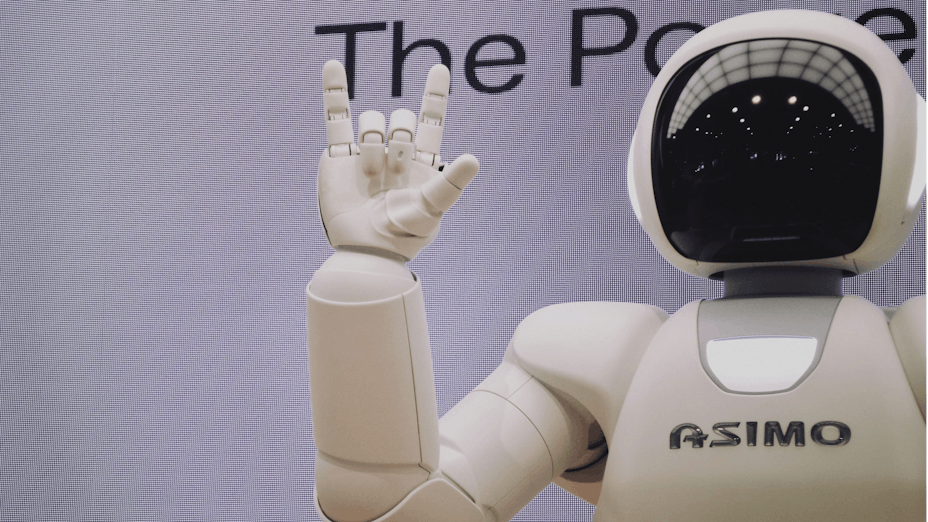Innovator Harrij Schmeitz sees application of disruptive technology accelerating
The fourth industrial revolution is turning familiar processes upside down. Concepts like Internet of Things, data mining, artificial intelligence and robotisation can no longer be left out of innovation agendas. Within the horticulture sector, innovator and independent project manager Harrij Schmeitz has long been at the forefront of the digitalisation front. He foresees profound changes in cultivation technology, chain processes and organisations.
"Autonomous, data-driven cultivation systems are definitely coming. There is plenty of experimentation going on and developments such as vertical farming are driving it. It is also necessary. The need for complete control over cultivation systems is increasing and there are fewer and fewer green fingers to provide it. Of course, humans remain involved. For some operations longer and more intensively than others, but no industry can function properly without human input. This also involves new areas of knowledge and competences. Future horticultural companies will be designed, staffed and managed differently. This process is already starting to take shape."
The time is ripe
Harrij Schmeitz has a clear vision of the Future. He believes the time is ripe for data-driven platforms where numerous data and information flows (business and market information) come together, to be processed integrally and translated into set points for cultivation. Much of the knowledge and technology needed for this is already available in the ICT world and some other sectors. Now high-tech horticulture is coming into its own. Using measuring instruments and vision technology, growers are increasingly able to determine in real time how their crops are performing. Heating and cooling systems, fans, CO2 dosing, customised fertilisation and precisely controllable supplemental lighting systems are enough to direct growth in the desired direction and keep the Crop in balance.
"An optimal growing system reduces stress on the plants, making them less likely to get sick and stay vital longer," says Schmeitz. "We know better and better what is needed for this. It now comes down to integrating and tailoring everything to the best practices within global greenhouse farming."
It comes in stages
Thanks in part to initiatives such as The Autonomous Greenhouse Challenge, growing investments in vertical farming and private initiative such as Grodan's e-Gro, there is a clear acceleration in the development of data-driven growing concepts. As manager of the Glas4.0 program, Harrij is working on this himself. "It is taking place in phases," he continues. "Initially, the output will be substantiated proposals to the cultivation manager. Once these have proven their worth and confidence in the technology increases, there will be room for self-learning, fully autonomous control platforms. Linking with market information systems could be a logical next step, guided by a better match between supply and demand. In parallel, a new wave of innovation in robotisation is taking place. Operations such as crop care, harvesting and scouting for diseases and pests will eventually be carried out mainly by machines."
Smaller compartments
Schmeitz notes that large, contiguous departments and steering sections can get in the way of accurate crop management. "The larger compartments become, the more difficult it is to achieve an even climate," he says. "When you can measure to the decimal point at plant level and set set points, it is not smart to set up cultivation departments that frustrate accurate control in advance. So, in addition to the technological innovation that is now underway, system innovation is also needed to do justice to this new technology. I expect growers and greenhouse builders will soon recognise this. The large, contiguous departments and steering sections that are still common today will gradually make way for compact, individually steerable compartments. This doesn't stand in the way of continued scaling up at company level. In addition, robots for harvesting and crop operations will influence the design of cultivation systems. Taking everything into account, one can safely speak of disruptive developments."
Structural investment in R&D
The ICT specialist concludes by expressing the hope that primary percentages will not wait on the sidelines, but purposefully co-invest. "Compared to other sectors, agriculture and horticulture companies invest somewhat less in R&D. It is not readily budgeted for at the company level and the implementation of new technology seems to be mainly linked to new construction and expansion projects." The few companies that do have a clear R&D policy and set aside money for it are generally in the vanguard. However, innovation is about more than just money. According to Schmeitz, it is mainly about the right "mind set"; about the will to push boundaries, question business processes and embrace them with the help of disruptive technology. "In such companies, innovation is part of the culture and new cultivation concepts and knowledge areas take root quite easily. With regard to data-driven cultivation, it will be no different."
Profile
Since completing his horticultural studies at HAS in 1985, Harrij Schmeits (Technology Pull B.V.)has worked as an innovation consultant and project manager . He draws large and smaller ICT-related projects for a variety of clients in the vegetable, floriculture and fruit world. Building bridges and connecting parties by technological means are second nature to him. Among other things, Schmeitz is currently programme manager for Glas4.0. Through this platform, several growers' associations work together on the implementation of disruptive technology for the benefit of affiliated fruit vegetable producers.






